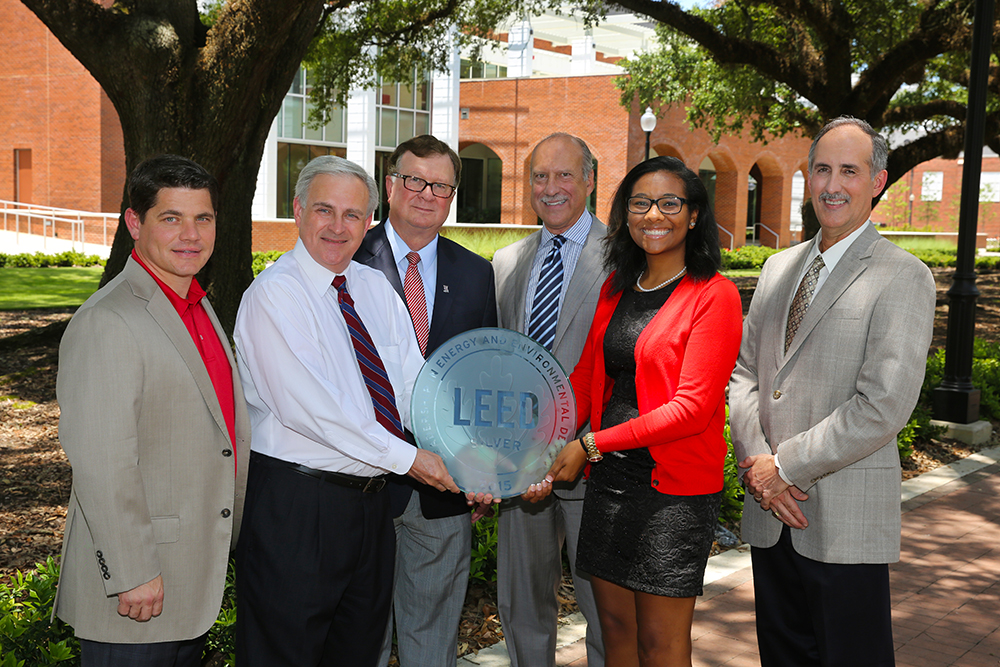The University of Louisiana at Lafayette’s Student Union has become the city’s first major public building recognized for environmental sustainability through the Leadership in Energy and Environmental Design program.
The Student Union has earned a silver rating as part of the U.S. Green Building Council’s LEED program. It provides guidelines for implementing sustainable building design and construction.
Steve Oubre of Architects Southwest, the firm that planned and designed the new Student Union, praised the University’s commitment to sustainable practices.
LEED recognition is earned based on several factors, including types of materials used in construction, recycling, and efficient energy usage, he said.
“The backbone of this campus,” Oubre said referring to the Student union, “ is based on sustainability, and that’s phenomenal.”
The new Student Union, at 178,000 square feet, is about 40 percent larger than the previous structure. Renovation and expansion work was completed this spring.
While much of the old student union was demolished, its bookstore, ballroom and theater were refurbished. “The fact that we retained an existing fabric also played a key role in attaining a LEED silver rating,” Oubre explained.
So, too, did recycling efforts. More than 77 percent of the debris generated during the demolition work was recycled. The recycled material amounted to more than 440 tons of metal and 11,504 tons of concrete.
In addition, energy consumption in the new Student Union is projected to be about 34 percent lower than average for similar buildings of the same size and function, said Wayne Domingue, a project manager at Architects Southwest. He credited the union’s ventilation and exhaust system for helping to lower energy consumption.
The new Student Union also earned recognition for the use of materials that contained low amounts of volatile organic compounds,, or VOC’s. The phrase refers to materials containing chemicals that evaporate into gas at room temperature.
“Some of the materials with low VOC’s included flooring materials such as carpeting, and adhesives, sealants and paint,” Domingue said.
Photo info: (left to right): William Lemoine, vice president of commercial construction, the Lemoine Co.; Jerry Luke LeBlanc, vice president for administration and finance, UL Lafayette; Dr. Joseph Savoie, president, UL Lafayette; Steve Oubre, principal, Architects Southwest; Kirsten Allen, president, UL Lafayette Student Government Association; and Wayne Domingue, project manager, Architects Southwest.
